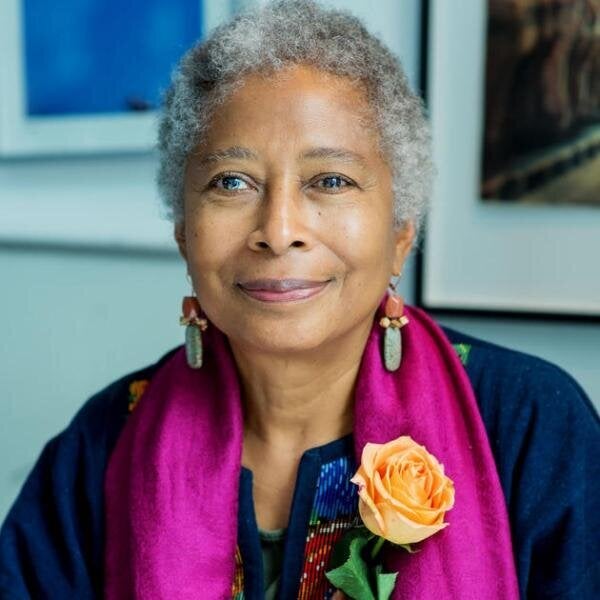Despite its success with audiences after it opened on Broadway in 2005, the adaptation of Alice Walker's novel The Color Purple into a musical play was never going to garner the most effusive of welcomes by theatre and literary critics. Rewritten for the stage by Pulitzer Prize and Tony award winner Marsha Norman, and with music and lyrics by Grammy award winners Brenda Russell, Allee Willis and Stephen Bray, The Color Purple - The Musical went on to be nominated for 11 Tony awards in 2006 (even though it won only one) and ran for more than 900 performances in New York City before touring throughout the US.
As the first European musical version of The Color Purple opens in London at the Menier Chocolate Factory, it is important to acknowledge its previous commercial success even though any adaptation of the novel into another medium will always struggle to portray the deep emotional scars that Walker attributed to her novel's characters in such an accomplished storytelling manner.
Although now widely acclaimed as a literary cornerstone in American literature, when it was published in 1982, the novel The Color Purple encountered very mixed reactions. Its epistolary structure, intricate lexical choices and complex syntactic arrangements mirrored a delicate and deeply emotional subject matter that went on to win the Pulitzer Prize and the National Book Award but didn't always make for pleasant reading. The consequences of family rape and the calculated acts by individuals (particularly men) to negatively influence the self-worth of black women portrayed a violent side of humankind that many readers could not stomach. However, this was only one of the aspects that made The Color Purple a brave and groundbreaking novel on many levels. This was a highly accomplished novel that, in its celebration of the unique vernacular language of the American south in an harmonious symbiosis with literary tropes such as the Bildungsroman or the components of Greek tragedy rightly allowed for Alice Walker and African-American literature to take a central position in the North-American literary canon.
It is undeniable that attempting to translate the distressing realisation of life's limitations constantly imposed on the human condition while highlighting the need to remain buoyant in the face of physical abuse and emotional adversity would always be a challenging task for a populist artistic medium such as musical theatre. This difficulty was made even more insurmountable when considering the old-fashioned and somehow dated songbook written by Russell, Willis and Bray that made most songs sound as if they had been written in the late 1970s or during the 1980s, an inexplicable artistic decision when the plot of both the novel and the musical takes place between the 1910s and 1940s, a period of great prosperity for music produced by African-American musicians throughout the USA.
However, and faced with the challenge of resolving preceding creative weaknesses, what director and set designer John Doyle managed to accomplish in the intimate setting of the Menier Chocolate Factory (known, within the London drama circles, as a cradle for many plays that go on to win the hearts of audiences and critics in the city's West End) was, despite a few minor flaws, an admirable accomplishment. By positioning the audience in rows occupying the three sides of a square set made from worn wood boards, the production allows for an emotional involvement with the story and the actors' performance that West End theatres most certainly do not allow.
The sound effects by Gregory Clarke reinforce this connection between audience, acting and play by at times generating dramatic echoing shouts that stay with the viewer for hours after the play ends. And of particular mention on the technical/creative side are the very appropriate and effective costumes by Matthew Wright. Throughout the play, the colours and patterns observed in the clothes play a crucial role in depicting the emotional development undergone by the characters: neutral browns and beiges evolve into colourful and bright patterned garments as the protagonist Celie goes on a journey of acceptance that, despite a painful path, leads to a serene realisation of happiness and awareness of her own identity.
Sublimely acted by a carefully restrained Cynthia Erivo, Celie finds her dramatic foil in Sofia (in a terrific performance by Sophia Nomvete that enraptures the audience every time she takes to the stage) as both characters evolve throughout the play (as in the novel) in opposite directions: as Sofia's defiant attitude to societal prejudices sinks from confidence to despair (only to regain her spark at the end), Celie's steady thinking and measured actions evolve from invisibility towards celebration of personal worth and individuality.

Alice Walker (photograph courtesy of the Southbank Centre)
If the London version of The Color Purple - The Musical has one main criticism that was not caused by following the 2005 original book, it is the simplification of the anthropologically significant 1940s movement that had African-Americans wishing to return to their black roots in Africa. When Celie's sister Nettie describes her life as a missionary in Africa, the production takes an unfortunate turn to its weakest point with the actors wearing pseudo-tribal costumes that resemble more a scene from The Lion King - The Musical rather than an intelligent depiction of a key sociological moment in American history that ultimately culminated in the collective aspiration (at its most prominent between the 1960s and 1980s) to search for one's own ethnical identity.
Despite a few faults (and with a marked absence of the luxurious production values of its Broadway counterpart), the production of The Color Purple - The Musical at the Menier Chocolate Factory is commendable in many ways, including an outstanding cast of wonderfully captivating acting and singing abilities. Most of all, the way the production manages to balance the exceedingly literary qualities of the novel with the populist appeal of the musical in a considerate manner is more than enough to recommend it and deem it as one of the most significant theatre productions that London will witness this year.